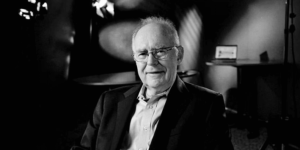Moore’s Law is a fundamental principle of modern computing that states that the number of transistors in a microchip doubles approximately every two years, resulting in an exponential increase in computing power. This law has been a driving force behind the rapid evolution of computer technology over the past few decades. The father of Moore’s Law is Gordon Earle Moore, a renowned American engineer, entrepreneur, and co-founder of Intel Corporation.
Gordon Moore was born on January 3, 1929, in San Francisco, California. He received his bachelor’s degree in chemistry from the University of California, Berkeley, in 1950 and his Ph.D. in chemistry and physics from the California Institute of Technology (Caltech) in 1954. After completing his education, Moore started his career as a researcher at the Applied Physics Laboratory at Johns Hopkins University, where he worked on developing missile guidance systems.

In 1957, Moore joined Shockley Semiconductor Laboratory, a startup company founded by William Shockley, one of the co-inventors of the transistor. However, Moore soon became disillusioned with Shockley’s management style and left the company along with seven other scientists to form Fairchild Semiconductor in 1957. At Fairchild, Moore continued his research on semiconductor technology and contributed significantly to the development of the integrated circuit, which revolutionized the electronics industry.
In 1968, Moore co-founded Intel Corporation along with Robert Noyce, another Fairchild Semiconductor alumnus. At Intel, Moore continued his research on microelectronics, and in 1975, he published an article titled “Progress in Digital Integrated Electronics,” which contained his observation that the number of transistors in a microchip was doubling every year. Moore revised this prediction in 1975 to state that the number of transistors would double approximately every two years, which has since become known as Moore’s Law.
Moore’s Law has been the driving force behind the rapid advancement of computer technology over the past few decades. The law has made it possible to produce microchips with an ever-increasing number of transistors, resulting in faster, more powerful, and smaller computers. Today, Moore’s Law is still relevant, and the exponential growth of computing power it predicts shows no signs of slowing down.

In addition to co-founding Intel Corporation and developing Moore’s Law, Gordon Moore has made numerous other contributions to the field of microelectronics. He has received numerous awards and honors for his work, including the National Medal of Technology and Innovation in 1990 and the Presidential Medal of Freedom in 2002. Moore is also a member of the National Academy of Engineering and the Royal Society of London.
In conclusion, Gordon Moore is widely regarded as the father of Moore’s Law, the principle that the number of transistors in a microchip doubles approximately every two years. Moore’s Law has been the driving force behind the rapid advancement of computer technology over the past few decades, and it continues to shape the future of computing. Gordon Moore’s contributions to the field of microelectronics have been immense, and his work has revolutionized the electronics industry.










